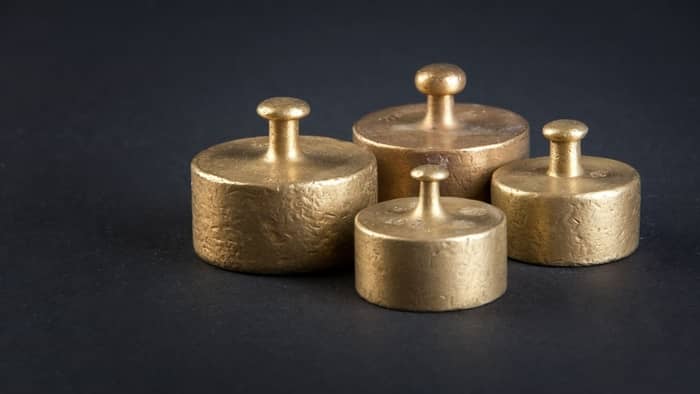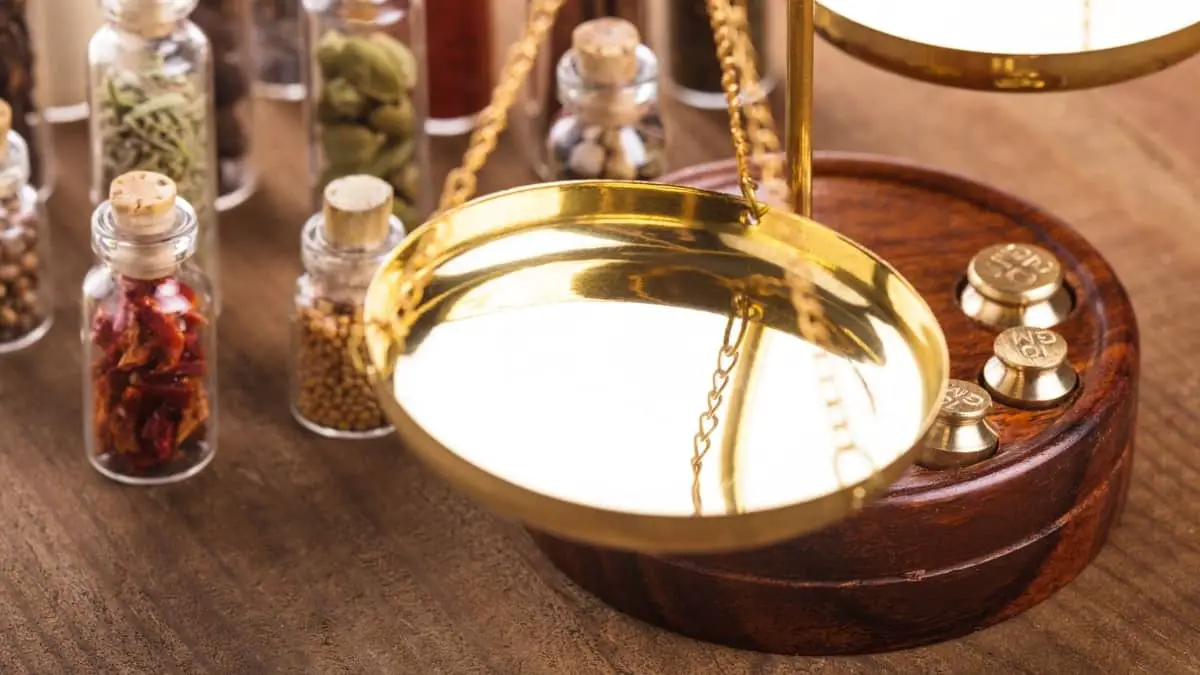Last Updated on May 15, 2022
Often we see recipes call for 1 gram of this or that. But, how do you measure a gram? Today, we look at how to make a gram scale at home.
Our technique doesn’t require any special tools or skills. You can use only what you have in your home and it is very easy. This is also a fun craft activity to get the kids involved in!
Why Is There A Need For Gram Scales?
Now, we are all familiar with your everyday kitchen scale. They usually measure your ingredients from about 1 gram up to 1.8 kilograms. However, measurements below 15 grams aren’t very accurate. Many of these scales will say that you have 1 gram worth of product, when in fact you have 3.
Now, you may be wondering why people would make a fuss over such a minuscule difference? Certain recipes depend on these extremely accurate measurements. If they even differ by 0.1 gram, it could create an entirely different dish.
Now, your next question is probably what types of recipes could this possibly be? A lot of patisserie recipes require specific reactions and textures.
Another large category in the culinary arts that requires these small yet specific amounts is molecular gastronomy. Essentially, this is one of the most scientific chemistry-inspired forms of cooking you get. For example, you can make “caviar” that tastes like bacon. Or a foam that tastes like shrimp. Fascinating, right? But this discipline cannot be done without gram scales.
What is a gram scale?
So, now that you understand why gram scales exist, let’s have a look at what they are and how they work.
A gram scale works in a range from 0.1 grams up to 10 or 20 grams. The increments it measures in is 0.1 grams, making it an extremely accurate measuring tool.
Gram scales are generally more difficult to find and much more expensive. So, many people have started asking how to make a gram scale at home.
Can you make a gram scale at home?
There is a couple of ways you can make a gram scale at home. But, there are also ways you can simply measure a gram easily. To make a gram scale doesn’t require specific skills or special tools.
One thing to keep in mind though is that these scales will likely not be as accurate as a digitally calibrated gram scale. But, if you don’t want to immediately invest in an expensive appliance you might only use once, then our technique will work just fine!
The type of scale you will ultimately be making is an ancient one. This scale uses gravity to perfectly balance two items on each side or a bar. If it doesn’t balance on one side, it is either too heavy or light on the other.
So, let’s have a look at exactly how to make a gram scale!

How To Make A Gram Scale At Home – What You Will Need
Equipment
- Yardstick or ruler
- Measuring tape or another ruler
- 20-inch piece of string
- Scissor
- Strong tape
- Envelope
- 1 gram weight
Step by step instructions
Step 1: Make the balance pole
First, find the exact center of the yardstick or ruler you are using. You can divide the measurement that is stated by two and make a little mark on the stick itself. See our tips below for finding the center of a ruler that doesn’t start at zero (o).
Once you have the center, tie one end of the string around it. Again, ensure that it is perfectly aligned and tape it to the ruler. The tape will prevent the string from sliding to a different spot.
Step 2: Make the envelope holders
Seal an envelope on its sticky side. Then, fold it in half and cut it into two equal pockets. Then, tape one pocket (envelope half) to the one end of the ruler. The other pocket can be taped to the other end.
Step 3: Suspend the scale
Tie the other end of the string to any area where it can hang freely. A nail on a wall won’t work because the ruler and envelopes will touch it You can also tap the string (using strong tape) to a door frame, a window sill, or the edge of a counter.
Once suspended, step back and have a look whether or not it looks perfectly horizontal. If not, you can add tiny pieces of tape to the side that is higher than the other until it balances.
Step 4: Measure 1 gram
Place a 1 gram weight in one envelope. You can also use an object that you know accurately weighs one gram. Once added, naturally that side will dropdown. The empty side will rise.
Then, add the ingredient you want to weigh to the other (high) side. Keep adding until the sides are perfectly balanced again. That’s when you have 1 gram measured.
Tips And Tricks
- If you have a ruler that doesn’t start at zero (o), then take into account the unmeasured distance. Add that distance to the rulers’ length and divide it by two to get the exact center.
- You must use equally sized envelope halves for each side. You should even use the same sized piece of tape to attach them. Even the smallest imbalance between the sides will create inaccurate results.
- You have to stick both envelope halves at the exact same distance away from the center mark. If one is closer, it will not balance correctly.
- When you suspend the scale, make sure to do it somewhere without drafts or wind. Any movements can cause an inaccurate reading.
- You cannot hold the scape with your hand. No matter how still you think you are holding it, it will still move slightly. This is enough to alter tiny grams.
- 1 ml of baking powder weights 1 gram. So, if you have a tiny 1 ml measuring spoon, you can use it.
In Conclusion
If you found this article on how to make a gram scale incredibly handy, let us know in the comments below! We would love to know what you think and if you have any other topics you would like us to cover!
Read more about Bakers Rack Ideas
FAQs
How can I measure 1 gram without a scale?
You can make your own gram scale at home. You can also go look at what that specific ingredients conversion from grams to millilitres is. This is also a more accurate method you can use.
How do you make a homemade scale?
Tie a piece of string in the center of a ruler. Then, attach two equally-sized envelope halves on each side of the ruler. Suspend the make-shift scale from a surface without it toughing anything or moving. Add a 1 gram weight in the one envelope half. Finally, measure out another 1 gram in the other envelope.
How do you scale grams?
To measure grams on a scale, you would need a gram scale. Alternatively, you need a scale that can measure in grams. Set your bowl or container on the scale and tare it (or zero it). Then, add your ingredient slowly until it reaches the correct number you are looking for.
Can you use a phone as a scale?
Apparently there are some apps that have been developed to work as a scale. However, you would still need other tools such as a post-it note and a re-sealable plastic bag.

Lindy Van Schalkwyk is a culinary specialist with a background in Advanced Cooking, Advanced Pâtisserie, Media Communications and Nutrition. She has gained invaluable experience in the culinary industry having worked in some of the top restaurants in Africa in 2016 and 2017. Her expertise in nutrition has enabled her to develop recipes for special dietary needs. In 2018, Lindy began working in the Food Media industry, focusing on recipe development, recipe writing, food writing and food styling.


